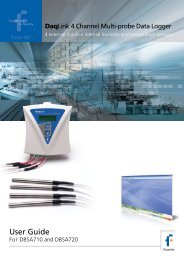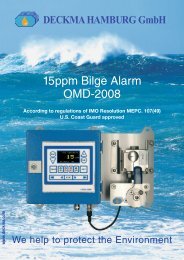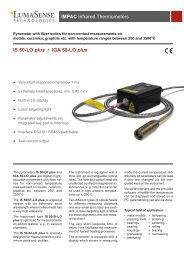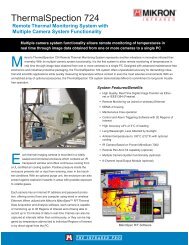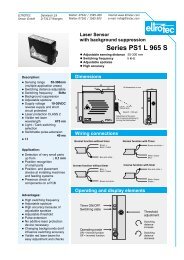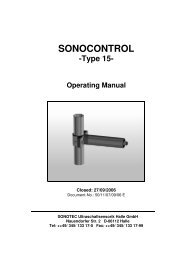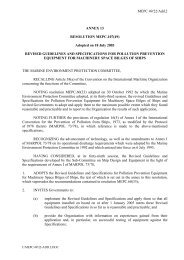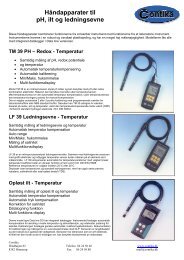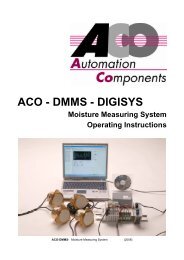Pyrometer- Handbook - Contika
Pyrometer- Handbook - Contika
Pyrometer- Handbook - Contika
You also want an ePaper? Increase the reach of your titles
YUMPU automatically turns print PDFs into web optimized ePapers that Google loves.
5. Determining the Emissivity of an Object<br />
Because the emissivity factor is so important in the<br />
calculations that determine temperature, it is essential to<br />
establish its value accurately for a given material.<br />
There are several ways that this can be done. Tables may<br />
be consulted to look up the values of the emission<br />
coefficient for many different materials (see Table 1). For<br />
metals, however, the values are mostly qualitative.<br />
The temperature of the object is first determined by<br />
measuring with a contact thermometer. Then the pyrometer<br />
is aimed at the object. Finally, the emissivity adjustment<br />
knob is turned until both devices indicate the same<br />
temperature. In order to use this method the object must be<br />
sufficiently large and accessible.<br />
Part of the object's surface is blackened with special<br />
lacquer or soot whose emission coefficient is close to 1, is<br />
accurately known and is stable up to the temperature to be<br />
measured. The pyrometer measures the temperature of the<br />
blackened surface, then it measures the untouched part of<br />
the surface. Then the emissivity adjustement knob is set so<br />
that the temperature value of the previous measurement is<br />
shown.<br />
The object is drilled to a depth of at least six times the drill<br />
hole's diameter. The diameter must be greater than the spot<br />
size diameter of the pyrometer. Like a black body source,<br />
the drill hole is considered to have an emission coefficient<br />
of nearly 1. First, the temperature in the drill hole will be<br />
measured, then the pyrometer measures the surface, and by<br />
correct adjustment the temperature of the drill hole will be<br />
determined.<br />
The emissivity of a sample object can be determined by<br />
spectrometer analysis. The manufacturer of your<br />
pyrometer will arrange for this analysis to be carried out.<br />
<strong>Pyrometer</strong> <strong>Handbook</strong><br />
tables<br />
comparison<br />
with contactthermometers<br />
partial blackening of<br />
the surface<br />
drilling into<br />
the object<br />
analysis with<br />
spectrometer<br />
23



